Sihang Wu
M$^{6}$Doc: A Large-Scale Multi-Format, Multi-Type, Multi-Layout, Multi-Language, Multi-Annotation Category Dataset for Modern Document Layout Analysis
May 21, 2023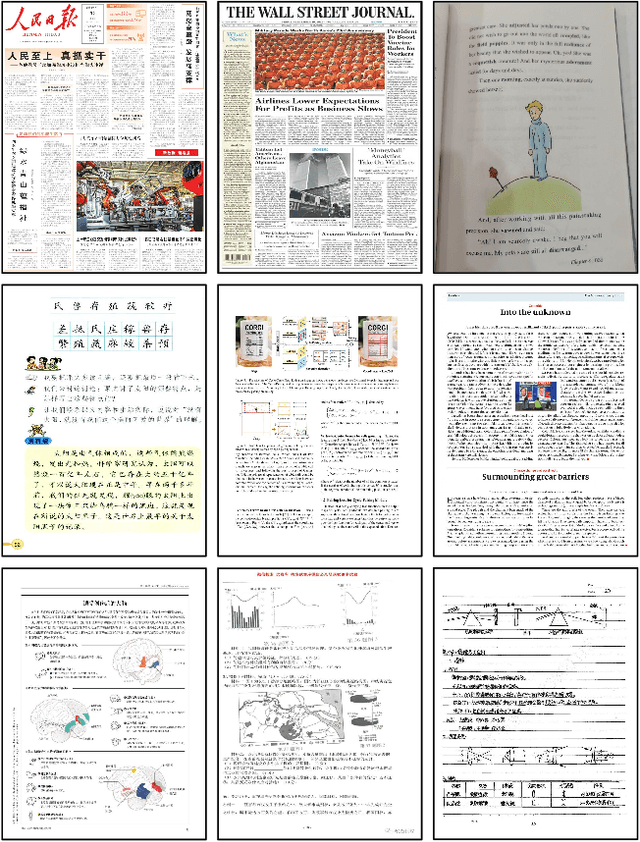
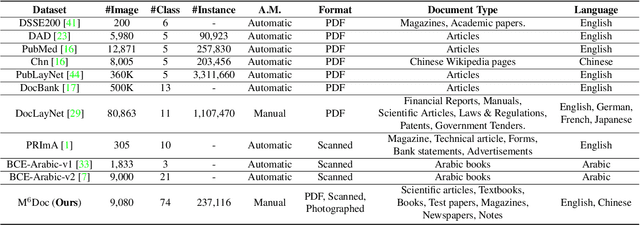
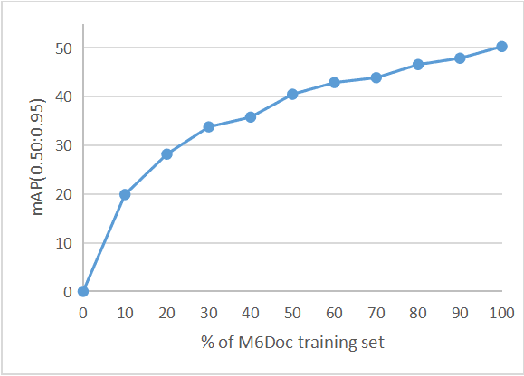
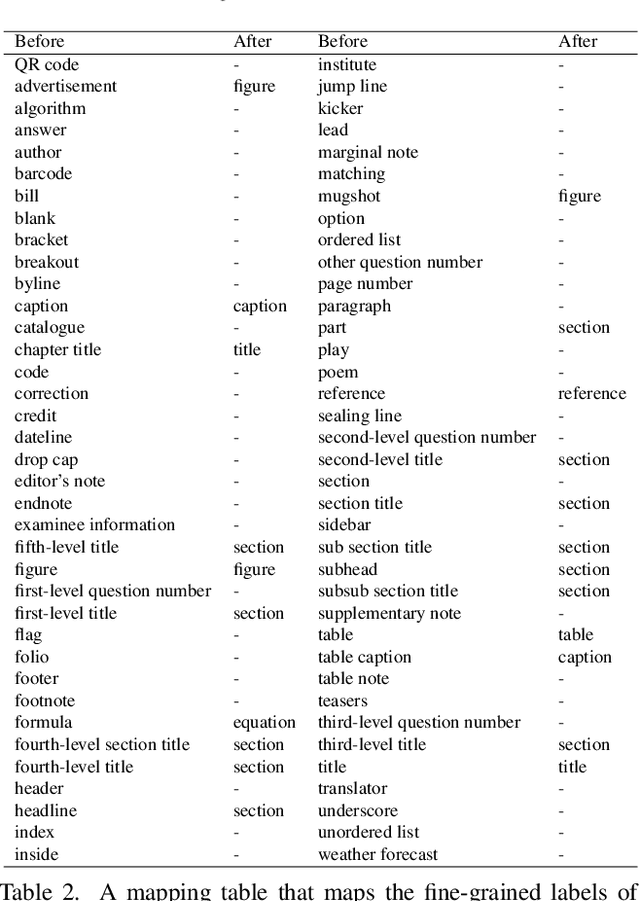
Abstract:Document layout analysis is a crucial prerequisite for document understanding, including document retrieval and conversion. Most public datasets currently contain only PDF documents and lack realistic documents. Models trained on these datasets may not generalize well to real-world scenarios. Therefore, this paper introduces a large and diverse document layout analysis dataset called $M^{6}Doc$. The $M^6$ designation represents six properties: (1) Multi-Format (including scanned, photographed, and PDF documents); (2) Multi-Type (such as scientific articles, textbooks, books, test papers, magazines, newspapers, and notes); (3) Multi-Layout (rectangular, Manhattan, non-Manhattan, and multi-column Manhattan); (4) Multi-Language (Chinese and English); (5) Multi-Annotation Category (74 types of annotation labels with 237,116 annotation instances in 9,080 manually annotated pages); and (6) Modern documents. Additionally, we propose a transformer-based document layout analysis method called TransDLANet, which leverages an adaptive element matching mechanism that enables query embedding to better match ground truth to improve recall, and constructs a segmentation branch for more precise document image instance segmentation. We conduct a comprehensive evaluation of $M^{6}Doc$ with various layout analysis methods and demonstrate its effectiveness. TransDLANet achieves state-of-the-art performance on $M^{6}Doc$ with 64.5% mAP. The $M^{6}Doc$ dataset will be available at https://github.com/HCIILAB/M6Doc.
Joint Layout Analysis, Character Detection and Recognition for Historical Document Digitization
Jul 14, 2020
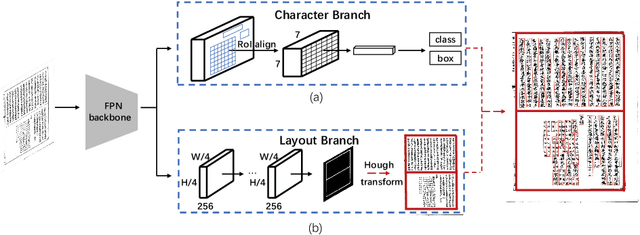


Abstract:In this paper, we propose an end-to-end trainable framework for restoring historical documents content that follows the correct reading order. In this framework, two branches named character branch and layout branch are added behind the feature extraction network. The character branch localizes individual characters in a document image and recognizes them simultaneously. Then we adopt a post-processing method to group them into text lines. The layout branch based on fully convolutional network outputs a binary mask. We then use Hough transform for line detection on the binary mask and combine character results with the layout information to restore document content. These two branches can be trained in parallel and are easy to train. Furthermore, we propose a re-score mechanism to minimize recognition error. Experiment results on the extended Chinese historical document MTHv2 dataset demonstrate the effectiveness of the proposed framework.
 Add to Chrome
Add to Chrome Add to Firefox
Add to Firefox Add to Edge
Add to Edge